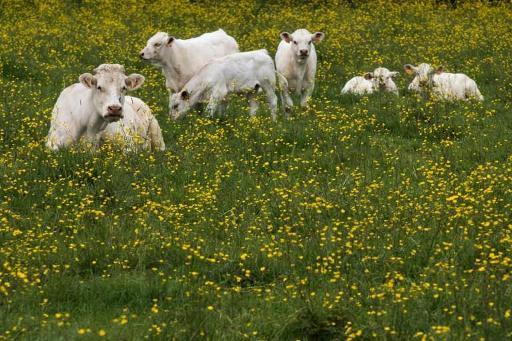The use of antibiotics in livestock farming in Belgium decreased by 12.8% in 2018 compared to the previous year, according to data compiled by the Centre of Expertise on Antimicrobial Consumption and Resistance in Animals (AMCRA).
“This is the most significant reduction in the space of one year since 2011,” said AMCRA President Jeroen Dewulft, who is also a professor at the University of Ghent (UGent).
AMCRA cooperates with the Federal Agency for the Safety of the Food Chain (FASFC) and the Federal Agency for Medicine and Health Products (FAMPH).
It was created in 2012 with three main objectives, which were later integrated in 2016, in a convention with the federal authority and 15 companies concerned with the reduction of antibiotic use in livestock rearing.
The aim of the agreement was to reduce antibiotic use in animals and thus, indirectly, in people.
The first goal set was to halve the total use of antibiotics in veterinary medicine by 2020, with 2011 as the year of reference. Despite a strong drop in 2018, the total reduction in antibiotic use is today 35.4%, “so we’re not yet there,” Dewulf said. “However, I am convinced that this objective can be met one day, even if much effort still needs to be made,” he added.
The other two goals of the convention were attained in 2017. They are: halving antibiotic use in medicinal foods and achieving a 75% reduction, by 2020, in the use of antibiotics of critical importance. These are broad-spectrum antibiotics also used in fighting bacterial infections in humans.
The use of antibiotics in medicinal foods has been reduced by 69.8%, while that of antibiotics of critical importance was 79.1% lower in 2018 than in 2011, even though a one-off spike of 34.4% was observed last year due to increased use in broilers and feeder calves.
The constant drop in the past few years in the use of critically important antibiotics has led to a sharp decrease in resistance to antibiotics among animals. On the other hand, resistance to antibiotics frequently used in livestock farming remains as high as in 2011.
“It is therefore of fundamental importance to pursue the effort to reduce the use of all types of antibiotics,” AMCRA stressed.
Much still needs to be done, in particular, in the chicken and feeder-cattle sectors.
“The decrease in the use of antibiotics is largely due to the pig-rearing sector, which is by far the most important sector,” Dewulf stressed. “On the other hand, in the chicken and feeder-cattle sectors, we are observing an increase in antibiotic use. It’s not dramatic, but it needs to be closely watched. We have thus alerted these sectors in that regard.”
The Brussels Times

